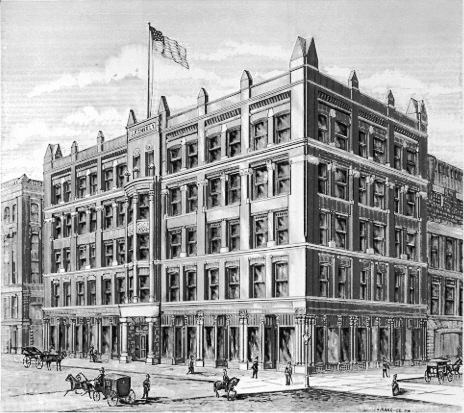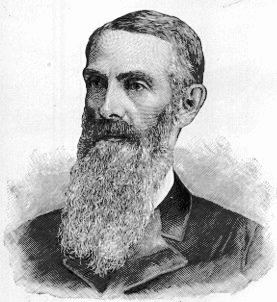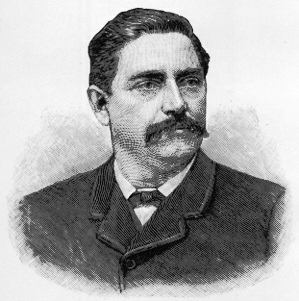|
vided with free text books so that even
the poorest are afforded opportunity for a free education.
In the high school there is a manual training department
where elementary mechanics are taught by practice, the high
school course further including languages, music and drawing
in addition to the ordinary high school course. Graduates
from the institution need no farther preparatory training to
enter any college. Omaha is particularly proud of its school
system. It leads the State in this respect, and census
statistics show that Nebraska has the smallest percentage of
illiteracy of any of the States in the Union.  SHEELY BLOCK honorably mentioned elsewhere, and handsomely endowed by his relict. Creighton College is conducted by the Jesuits, has a splendid faculty, and is numerously attended, ranking foremost with religious institutions of class. The Academy of the Sacred Heart, a Catholic seminary for girls, and Brownell Hall, a like institution in charge of the Episcopalian clergy, should also be mentioned. The Catholics maintain, in addition, parochial schools with an average attendance of 2,000 pupils. There are besides various private schools, commercial and telegraphy institutes. |
|
Intimately
associated with the educational advantages of the city may
be also mentioned the Public Library, an institution
fostered by the city. The library has at present a total of
about 17,000 volumes including all the standard works of
literature in all its branches. The latest report of the
librarian shows that during the fiscal year, 1887, the
library had 214,070 visitors, showing the extensive
usefulness of the institution. A project is now well under
way for the construction of a suitable library building,
lack of present accommodations making such a building a
necessity. It is proposed to expend $60,000 in its
construction.
In the point of churches, Omaha is remarkably well supplied, having a total of sixty-seven edifices devoted to religious purposes, twenty of which were erected during the year 1887, and eleven during 1886 -- a fair criterion of the Christian spirit prevailing in the community. The churches are distributed as follows: Methodist, twelve; Presbyterian, ten; Congregational, nine; Baptist, seven; Catholic, seven; Lutheran, seven; Episcopalian, five; Evangelical, three; Christian, two; Jewish, two; Spiritualist, one; Unitarian, one; Latter Day Saints, one. The total membership proper of these churches is estimated at 30,000, the Methodists and Catholics leading in point of numbers. Omaha is the seat of two religi- |
|||||||||
|
|
|
|

